The views and opinions expressed in this article are those of the author and do not necessarily reflect the official policy, position, or views of UltraSignup or its affiliates. Our platform exists to support open conversation and diverse perspectives across the trail and ultra running community.
It’s been nine days since the end of Golden Hour, the hot, sweltering, and infinitely tear-jerking final hour of this year’s Western States 100.
I’m still missing the magic of those epic moments, as well as the entire 10 days of trail running hysteria that preceded it. Experiencing the authenticity of the sport at its core definitely helped balance some of the concerns I have about the massive growth the sport is experiencing.
This year’s Tahoe Trail Week — aka the 10-day stretch of trail running euphoria that included the Broken Arrow Skyrace, TrailCon symposium, and Western States — was off the charts in every way possible. Each of those events brought out the best of what trail running is all about, namely the authentic act of individually moving your body, mind, and spirit through nature and collectively sharing that joy and freedom with the community of people immersed in the sport.
Having been a trail runner for more than 30 years and having covered the sport in various media roles for the past 25, I’m excited and optimistic about the post-pandemic surge trail running is experiencing.
But, if I’m honest, I’m also concerned about the rising trail running industrial complex.
The evolution of trail running was on full display in the racing action at Broken Arrow and Western States, yes, in front-of-the-pack competition but also in the vibrant middle of the pack, and equally as important back-of-the-pack finishers. Runners were equipped with the best trail running shoes, apparel, and accessories, and were fueled by the latest science-based nutritional products. And true to the sport, we celebrated those final finishers of both Western States and the Broken Arrow races as vigorously as we celebrated the winners and podium finishers.
I was there to write articles and take photos, but what also invigorated me was connecting with friends and acquaintances, meeting new people, cheering on runners, listening to panel discussions, and enjoying a variety of solo and group trail runs in the stunning Granite Chief Wilderness Area.
However, it was hard not to notice and be wary of the burgeoning trail running industrial complex — the huge, not-so-subtle feeding frenzing of big and small brands aiming to capitalize on the massive growth the sport is experiencing.
Footwear, apparel, and nutrition companies were ubiquitous through this 10-day festival of trail running. The event expos (both for the races and the symposium) were bigger than ever, and there was more exciting buzz about new shoes, nutritional supplements, and hydration accessories than ever before. And that’s significant, because it means that after decades of only scant support, brands are increasingly invested in the sport and the top runners, while there are also more small start-ups emerging than we have ever seen in trail running.
Plus there were a lot of engaging activations that were fun and rooted in the spirit of the sport. Yes, lots of shoe-demo fun runs during the week and the annual beer mile, for sure, but most notable were the French café set up by the Run the Alps crew and GU’s cool misting igloo at mile 62 of the Western States course in Foresthill. (Fortunately, there was nothing like the light tunnel on a remote part of the UTMB course in France.) Hoka’s athlete placards were spot-on, thoughtful and funny.
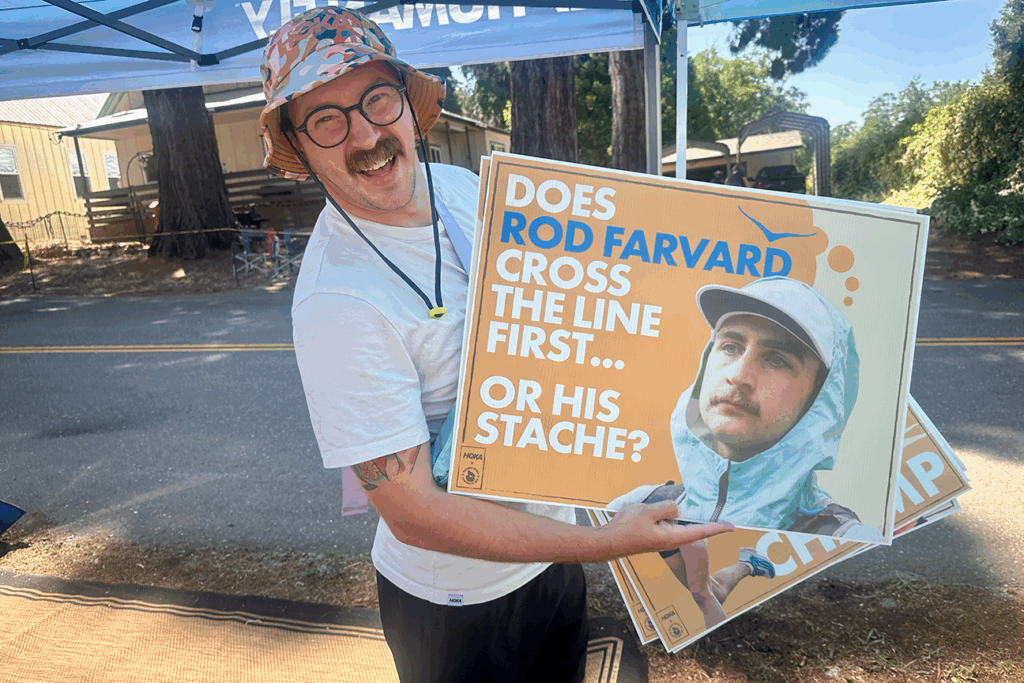
None of that concerned me. It’s more that sponsoring brands were more prominent than ever, and there were brand logos and branding signage everywhere, and it felt like a lot. The blatant branding of the race venue and athlete gear is how money flows through the sport, but it also seems contrary to the simple ethos of running through the natural environment and what has made trail running so compelling for so long. It hasn’t overwhelmed the sport yet, but is that where we’re heading?
If I had been teleported via time travel from my first experience at Western States in 1999, I would have thought I was at a NASCAR race. No, this isn’t a quasi-fascist Make Trail Running Great Again rant that’s pointing back to “the good ole days” — because trail running has never been as great as it is right now — it’s me being vigilant of what could be on the horizon.
Before you jump to conclusions, let me say here, I’m the farthest thing from being a stuck-in-the-past curmudgeon.
I’ve pushed for the growth and evolution of the sport since I was the founding editor of Trail Runner magazine in 2000, promoted the sport through thousands of articles, photos, and videos for numerous media outlets, served on the USATF MUT council, encouraged brands to pay athletes more, and have also played a role in pushing forward the advancement of trail running shoes through writing reviews and giving input to shoe developers.
Trail running has been growing gradually for decades, but much of that growth came from a grassroots level rooted in yesteryear, which is why progress was so slow, it lacked mainstream appeal, and struggled to become more diverse. As such, the trail running market remained fairly small, which meant it was an afterthought for even the biggest running brands.
But since about 2015 and exploding more vigorously since the end of the pandemic, not only are the biggest brands more immersed in trail than ever before — HOKA, Salomon, On, Nike, TERREX, and Brooks especially — but there are also dozens of small to medium-sized brands (La Sportiva, Black Diamond, Merrell, Arc’Teryx, The North Face, etc.) riding the new wave of growth, too, and numerous small startups like Norda, Satisfy, Speedland, and NNormal trying to take a bigger bite out of the the ever-growing but increasingly competitive pie in the U.S.
Out of that growth has come gear innovation (aka, much better shoes!), more sponsored professional athletes, progressive ideas (i.e, pregnancy deferrals, sustainability initiatives, outreach to adaptive participants, the intentional marketing to more diverse audiences), and a much wider invitation to join the fun out on the trails. But growth often brings outsiders, exploiters, and carpetbaggers, as well as some against-the-grain disruption and profit-seeking companies right in our midst.
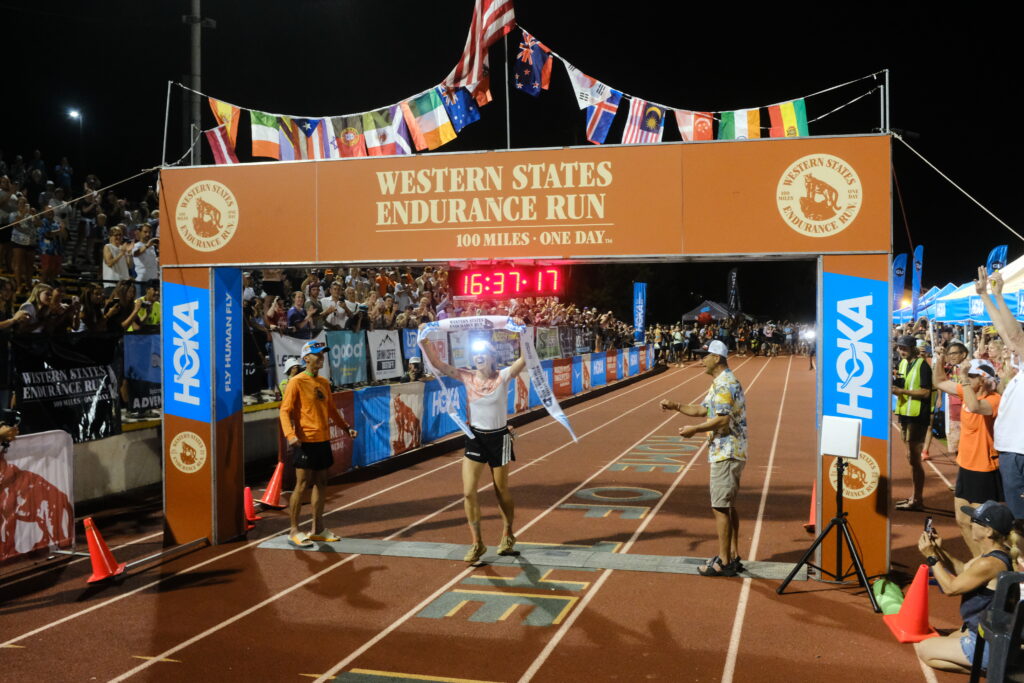
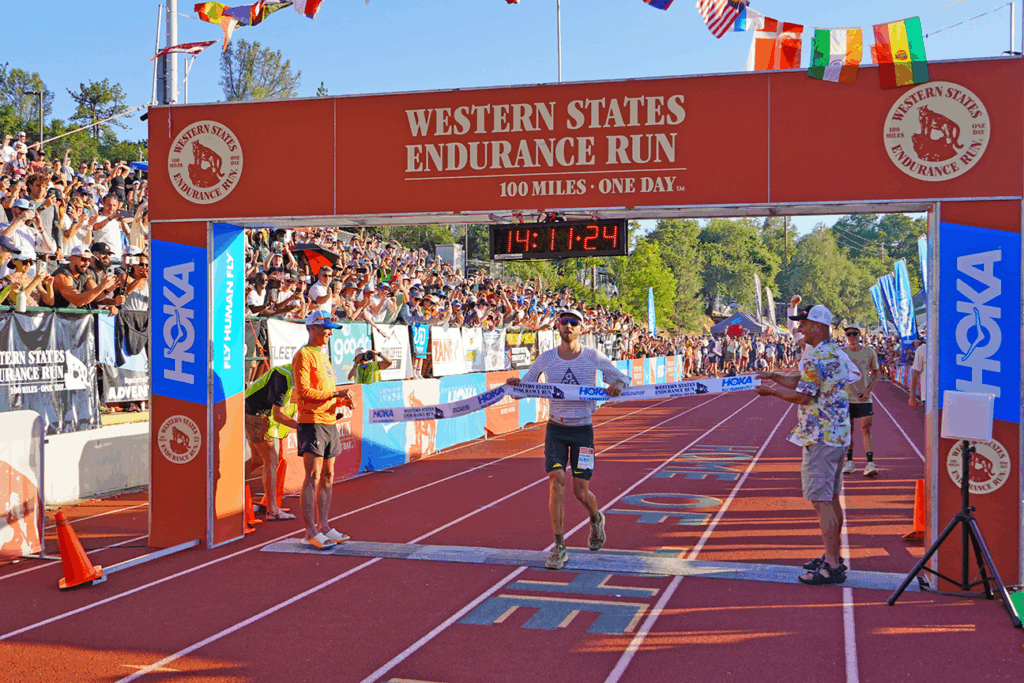
The challenge comes when suddenly those brands begin to control a sport. Track and field has been controlled by big brands and corrupt overlords for decades. That could never happen in trail running, could it? Will we see it coming if it does?
The second annual TrailCon couldn’t have come at a better time, but it also exposed some of the bubbling cauldrons percolating just below the surface. The two-day symposium took some very good next steps after its debut in 2024, expanding to approach more topics in greater detail.
“Trail running is, from both an industry and a community perspective, in a moment of transition,” TrailCon co-founder Dylan Bowman told me the week before everyone gathered in Tahoe. “It’s merging from a small grassroots, niche culture and on its way to becoming a full-blown, nearly mainstream professional sport. Hopefully by talking about things as a sport and as a community, we can start to get some mutual understanding of what is happening in the sport and where it can all fit in — instead of the fragmented gossip and reactions in the comments section of social media posts.”
TrailCon opened with an on-point, state-of-the-sport presentation that really framed where we are as a sport without overzealousness that often clouds reality — it’s growing fast, but still quite small and in need of greater diversity, accessibility, mainstream visibility, and non-endemic funding to grow — and then offered an engaging session about the rise of creators/influencers in trail running and later a heartfelt session about diversity led by Mirna Valerio. After that, several panels tried to go deep into the growing challenges and concerns about the professionalization and commercialization, but unfortunately fell into repetitive and sometimes naive banter from a few not-optimally-qualified panelists and moderators who seemed to have their own agendas.
The second day was much better, not only because it was set outdoors in the Palisades Tahoe village, but also because the panels were better, especially the high-performance nutrition talk, a chat about the future of racing, a discussion among gear entrepreneurs, and two thoughtful panels about diversity and inclusion. The TrailCon Awards ceremony were well-received because it tastefully honored a mix of past and current legends of the sport, even if the black-and-white letterman-style leather jackets that were awarded seemed a bit gaudy and over the top.
In general, the second TrailCon made big strides for the present and future of the sport, but now we, as a community, a sport, and an industry, have to keep the ball rolling on numerous fronts. While that’s a long-term challenge, it also means challenging, questioning and resisting that which goes contrary to the modern, all-inclusive soul of the sport.
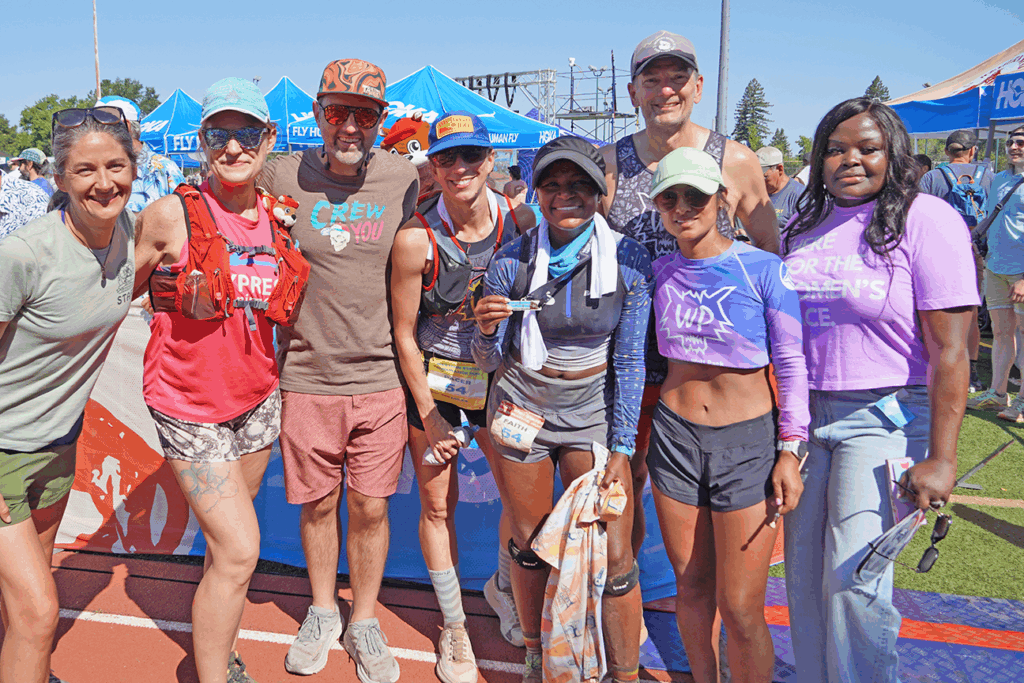
A lot of what’s happening on the growth front is, and will continue to be, good for the sport and its participants. But there are some aspects of that growth that perhaps have bigger consequences that are already impacting the core of the sport: the planned obsolescence business strategy of brands like Satisfy that creates a lust for excessively high-priced gear; the massive worldwide growth of the UTMB World Series; Nike not being able to think small enough to meet trail running where it is; $250+ trail racing supershoes; brands paying professional athletes as little as $30,000 a year; and $1,500 entry fees for races 200 miles and longer.
When Chris Myers pulled on a swimming mask and snorkel at the Rucky Chucky river crossing at mile 78 of the Western States course, it seemed to be a playful act of silliness. But the fact that it was covered with stickers from his nutrition brand sponsor — knowing it would get a lot of play on the livestream and be captured by dozens of photographers shooting social media content — made it seem entirely contrived for the benefit of the brand. Silly, fun, and harmless, yes, but definitely premeditated and branded.
Is there a dark side to so much corporate involvement in our soul sport that was once considered as dirtbag and anti-establishment as rock climbing, backpacking, and backcountry skiing? Is the growth being driven by the essence of the sport or the brands that are interested in selling more shoes?
Can the growth, commercialism, and professionalism be balanced with keeping the grassroots soul of the sport intact?
Yes, says Topher Gaylord, the president Western States Endurance Run Board of Directors and a long time participant in the sport. “I think there’s tension that people talk about as the soul of the sport being lost, but I think that’s a bit misguided,” Gaylord says. “There’s a lot more money in this sport now and it has become much more professionalized and commercialized, but I don’t think it has changed the grassroots feel of the sport. I think that’s still alive and kicking. I really think the community is alive and well, and it’s just evolving with the increase in participation. But it’s still there at the core nucleus guiding this growth.”
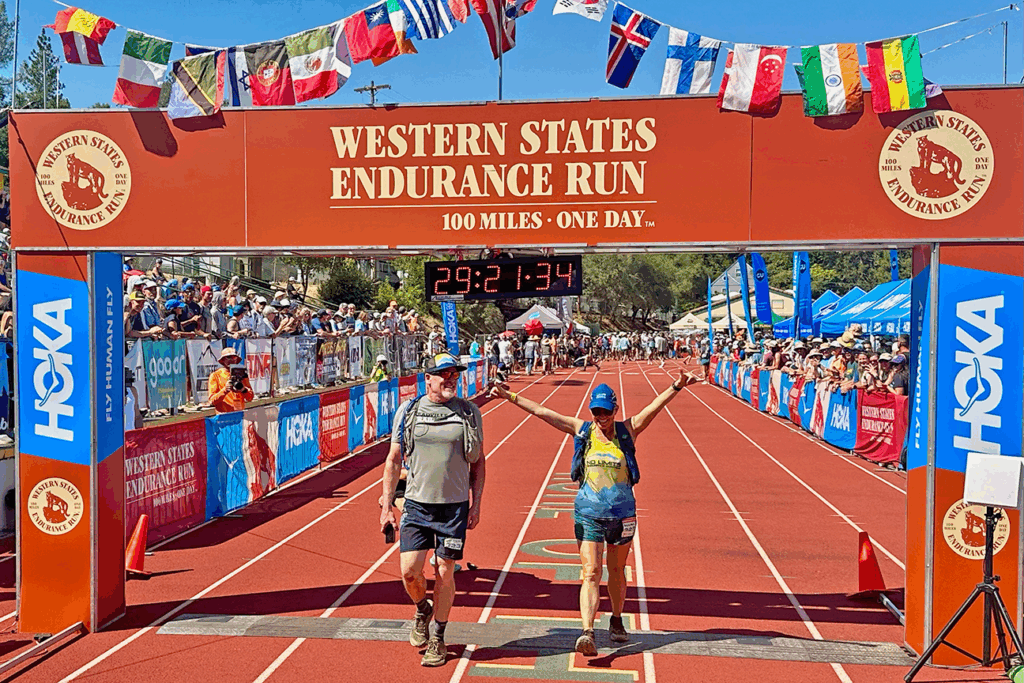
All photos by Brian Metzler
Thank you! This is a story that needs to be told, and questions that need to be answered. I’m doing my best to fertilize the grassroots of trail running so they stay strong, and this story does too. God job.
Yes, it has changed. Its kind of ridiculous. Used to be $20 entry and you got a t-shirt and maybe a beer. It was just about having fun and seeing how fast you could go. Now its often more than a hundred dollars and you have timing chips.
Jerry Green who used to own the Baked in Telluride Bakery used to sponsor the free Sneffel Highland Trail race. The first runner in would look at the watch sitting on the table and note the time, you got a free beer afterward, it was low key. No more.
Brand placement is gross and I’m embarrassed for the folks who participate in it. It’s the reason I don’t watch professional sports. Trail racing has a sacred, close community vibe that I would hate to see ruined by ever-bolder attempts to squeeze a logo into a shot – especially when that shot is among some of the most beautiful settings the athletic world has to offer. Product development, on the other hand, is expected and welcome. It allows us to push the boundaries of our capabilities while increasing comfort and efficiency. But please, advertise your wares at the appropriate time, in the appropriate place. Take a cue from Vermont’s billboard-free highways – don’t trash the path with ads.
Growth in new markets for businesses and brands is necessary and the elite takeover of the marquee events is inevitable … and so it will be. But if you’re looking for the soul of trail running, turn your vision to the small, grassroots events taking place all across the country. This is where you’ll find the “soul” of trail running!
Runner for 50+ years; trail runner for 20 years. Started out with small WV races with entry fees under $50, participants under 150 and often was expected to bring a covered dish for afterwards. Awards went to the top two or three and homemade finisher awards for all. Best blood awards were not uncommon and it felt like being part of a secret group.
For a middle of the pack runner (now definitely farther back) I felt every bit as important as the winner. As long as that last part doesn’t change the sport will be ok
Topher nailed it. “The Spirit of Gravel” has been having essentially the same debate in the gravel cycling community. At some point, money is involved, which brings professionalism, and then attracts outsiders, leading to brands monetizing, which in turn drives others to question the changes.
The culture of sport, much like social media or many other things in life, is what you make of it. Even in the world of trail running, there’s room for the “grassroots soul” and the pomp and circumstance of big events. We should celebrate people running, because it’s valuable in many ways.
We will always have the Tennessee Backyard Ultra. You want grassroots and Down Home? We’re here, running loops until were dead, then camping out, taking shots of liquor and eating good with our neighbors.
Just one thing to add – as a man born and raised in the Sierra Gold Country, the old words are Ruck-A-Chucky. Rucky Chucky makes yall sound like flatlanders, respectful like.
No sport is ever ruined or over commercialized, just bought out for a time by scoundrels and carpetbaggers. The degenerates are still here, plodding along and seeking intentional discomfort, hydration bladders full of water with lemon juice and salt, taking potassium pills, eating nerds Clusters, bananas, PB&J sammiches and granola bars, and chasing it all down with pickle juice. DIY and run for YOU.
Maybe it’s your own complex Brian and this is actually good for trail running. When was the last biracial top 3 at Western States?
Appreciate your article.Seems as though we’re at a hinge point in the history of trail running. The running industrial complex” is definitely in full swing. I’m 67 yrs old, been trail running for 25 yrs. While the trail running “present” is absolutely breathtaking, I share your concern about “the massive growth the sport is experiencing.” Feel like we’re losing something. Solution: in addition to offering current race formats recreate races e.g., “Re-run of the 2017 Broken Arrow Skyrace.” “Re-run of the 2006 Moab Trail Marathon.” Get Jurek, Karnazes and Yasso to recreate the race. Match gear and aid stations (if any were used!) to what was available then. [Idea: if you really want to know what it was like, match the stack height of shoes to re-run date). Would be awesome to see a “Re-run of the 1977 Badwater.” (Hat tip to Al Arnold.) It’s a great sport filled with wonderful people. It has brought me great joy.
I believe your post is perfect timing. Yes it is something we have to be cautious of. The reality is as the sport becomes more popular, companies are going to want to profit off of it. As for the elite runners, I’d never want to take an opportunity away from them to make $$$ and provide for their families, as long as its ethical. That said, I put the onus on what the sport remains on the Race Directors
What must not be forgotten is that this is a fan participant led sport. With many other sports, the stars/elites drive fan engagement. Trail and Ultra running is the opposite where its importance and revenue is driven by those of us who attend knowing we will never see a podium or top 10 finish. The last place finisher at Western States is probably more important to the growth of the sport than the first place finisher.
As long as the Race Directors and Trail industry doesn’t forget that this sport is fan led and creates an environment that does NOT alienate the everyday trail runner, whether through access to race entrances, cut offs or overall affordability it will be fine. BUT the moment it does and starts chasing cash rather than protecting the soul of the sport, then we will have problems.